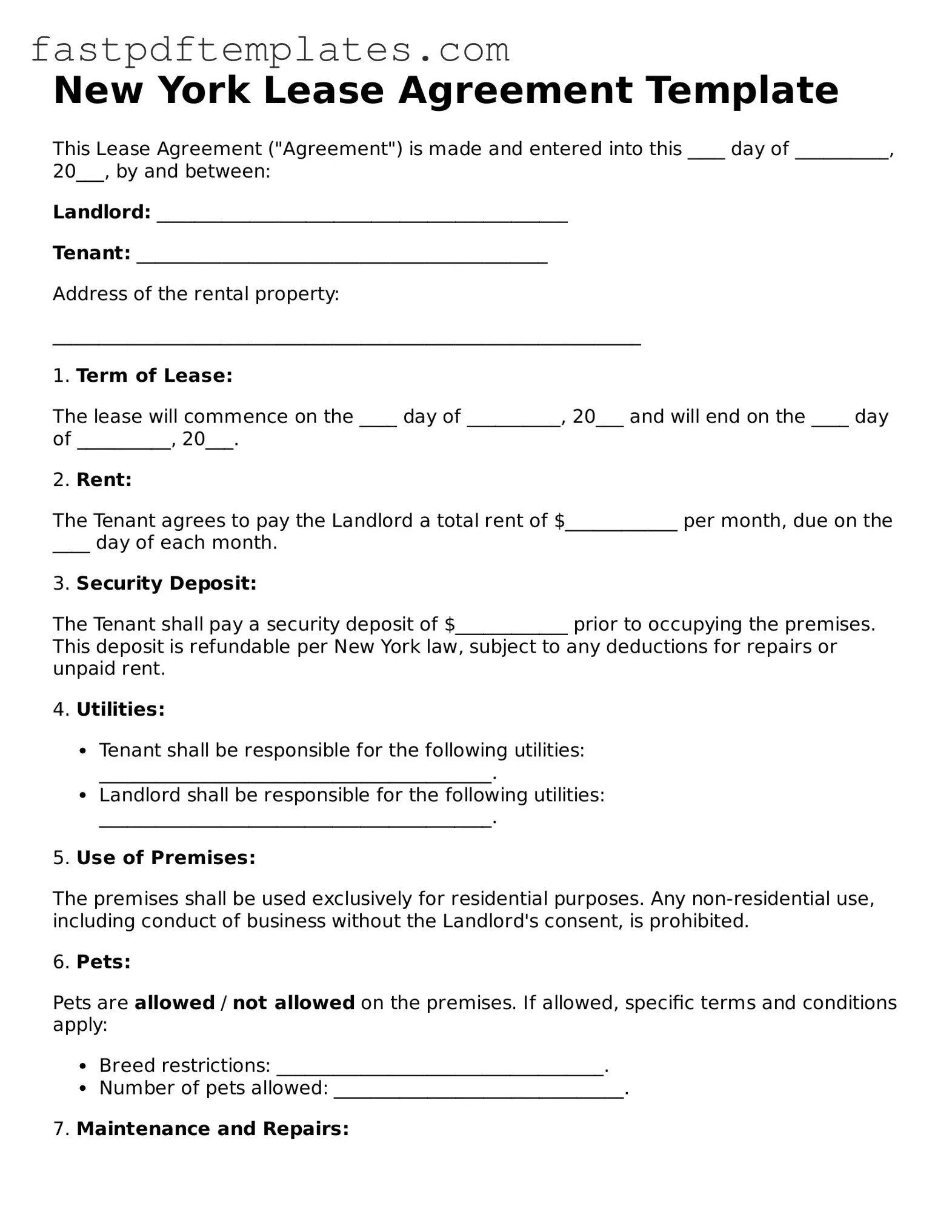New York Lease Agreement Template
This Lease Agreement ("Agreement") is made and entered into this ____ day of __________, 20___, by and between:
Landlord: ____________________________________________
Tenant: ____________________________________________
Address of the rental property:
_______________________________________________________________
1. Term of Lease:
The lease will commence on the ____ day of __________, 20___ and will end on the ____ day of __________, 20___.
2. Rent:
The Tenant agrees to pay the Landlord a total rent of $____________ per month, due on the ____ day of each month.
3. Security Deposit:
The Tenant shall pay a security deposit of $____________ prior to occupying the premises. This deposit is refundable per New York law, subject to any deductions for repairs or unpaid rent.
4. Utilities:
- Tenant shall be responsible for the following utilities: __________________________________________.
- Landlord shall be responsible for the following utilities: __________________________________________.
5. Use of Premises:
The premises shall be used exclusively for residential purposes. Any non-residential use, including conduct of business without the Landlord's consent, is prohibited.
6. Pets:
Pets are allowed / not allowed on the premises. If allowed, specific terms and conditions apply:
- Breed restrictions: ___________________________________.
- Number of pets allowed: _______________________________.
7. Maintenance and Repairs:
The Tenant shall promptly report to the Landlord any repairs needed. The Landlord shall be responsible for all major repairs unless damage is caused by Tenant’s negligence.
8. Termination:
Either party may terminate this agreement by giving a written notice of at least ____ days prior to the expiration of the lease term.
9. Governing Law:
This Agreement shall be governed by and construed under the laws of the State of New York.
10. Signatures:
By signing below, both parties agree to the terms and conditions set forth in this Agreement.
Landlord Signature: _______________________________________
Date: _______________
Tenant Signature: ________________________________________
Date: _______________
